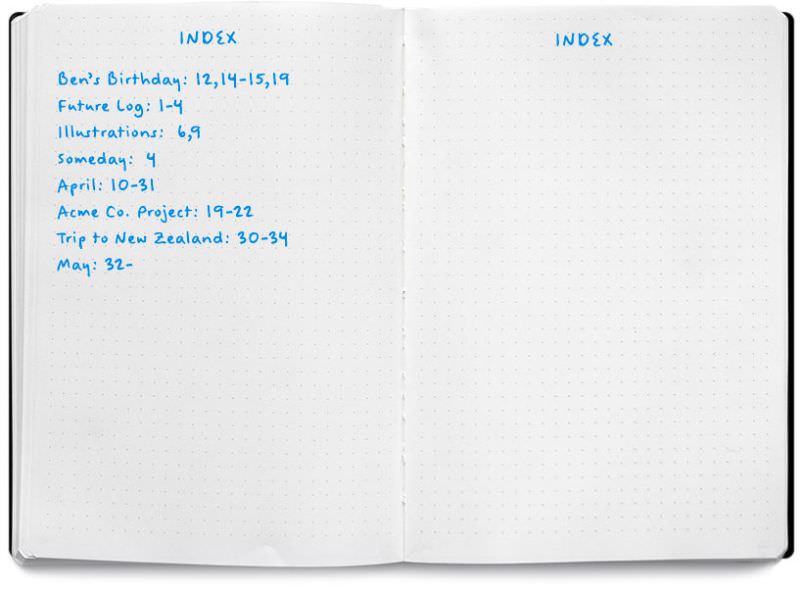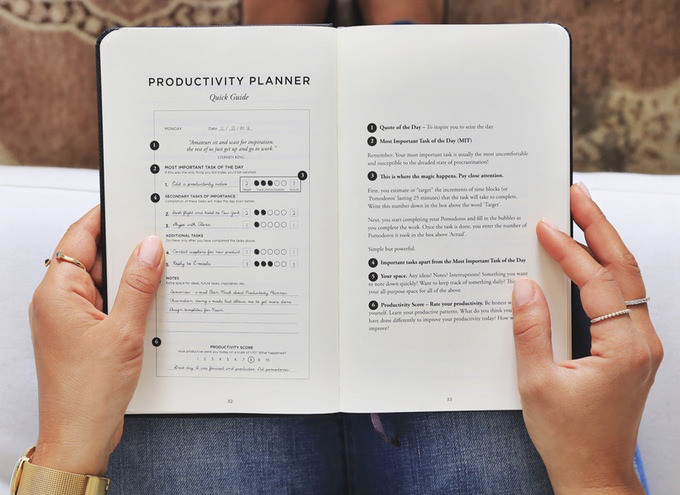5 Analog To-Do List Systems for Better Productivity
We previously discussed the allure of productivity tools: do they actually work when it comes to increasing your personal productivity rates? You may have all the digital to-do list apps in the market, free or premium, or the note-taking apps that help you jot down things you are fearful of forgetting (and still forget anyways), but again, the question is, are you more productive from the use of these tools?
Like New Year resolutions, to-do lists elicit the same sort of response from us. We make them, but despite our best efforts, eventually we forget about them until a new year or a deadline approaches. Without the right mindset to work with, we won’t be able to tap into their full potential.
But let’s say you are the type of person who cannot image going without a to-do list app, my new question now is do you go digital or analog?
Read Also: Productivity vs. Productivity Tools: What Works Best?
The pitfalls of digital to-do lists
In the digital age, you can carry your to-do list in your phone and have them on you all the time. Sync it in all your devices or share it with co-workers, your spouse, your friends and lo behold you are the King (or Queen) of Productivity.
Recommended Reading: Manage notes and lists with Sublime Text
This idea works… but only if you complete everything you have put in that list. Write it, do it, cross it out, chuck it — this ideal "let’s do this!" process is harder to achieve than it looks.
What happens to things that don’t get done the day you add it to the list? Does it get postponed? Forgotten? Archived? And are the things you add to your list feasible for your schedule? What about its level of priority? Not everything can be of the same level of priority (no matter what your boss says).
This is where the good old analog way of doing things comes in handy.
Going with paper
With digital to-do lists, you just… list. With paper, you can actually think through the things you are supposed to do, register the level of importance and priority of each tasks, arrange, schedule and plan what you can do today and what you can do next Tuesday.
There is something about writing it down (compared to typing it) that makes you feel more "committed" to get things done; it’s as though you are completing homework for your teacher to mark, or signing an important document, as opposed to typing in a comment box.
Plus, when you’re overwhelmed by the amount of things you need/have to do, take a pen and put everything down on paper, then map out the tasks across many days and months, and slowly feel the burden lift off your shoulder and float away.
Not only will your mind be at ease, instead of worrying, you’ll be more confident about finishing your tasks.
Organizing your days
One problem with the pen and paper method is that a long and plain to-do list is dull and hard to follow. What you need is structure, discipline and a method or system that can help you break down what it is you have to do.
By breaking tasks by type or emotion or importance, or implementing a format for laying out tasks and striking them out when they are done, you can see the positive effects of marking "done" your achievements on paper and in real life.
Here are five analog to-do list systems, the sort you do by hand, with a pen and on paper, that you can adopt to put some productivity back into your life.
1. Bullet Journal
Tap into the real power of bullets in a list. Bullet Journal® is the brainchild of a product designer, Ryder Carroll. He developed it to track tasks, events and notes in an effective manner. This is basically how Bullet Journal works.
The journal has four key sections:
#1 – Index
The Index includes the page numbers for all sections and topics.

#2 – Future Log
The Future Log contains the tasks that you want to perform in the future.

#3 – Monthly Log
The Monthly Log contains your monthly to-do list and calendar events.

#4 – Daily Log
The Daily Log carries the dated daily to-do lists.

Signifiers in the form of dots, circles and dashes are added to further classify the tasks:
- Once a task is completed, its bullet is changed into an X mark
- If it’s rescheduled, the bullet becomes >
- If it’s moved to the future log, the bullet will be <
To know more, check out the official website of bullet journal, or watch its introductory video below.
If you like that cool looking journal (notebook) you see in the video, it’s available here.
2. Productivity Planner method
Now, this method also comes with a pretty custom notebook, called The Productivity Planner, where you can put down your to-do lists. You don’t necessarily need it to use the basic technique or idea though, any paper or notebook will do.

Developed by the team at Intelligent Change, it’s a technique that combines to-do lists and The Pomodoro Technique® where you work in sprints of 25 minutes, with a 5-minute break in-between.
Watch how Alex Ikonn, the co-founder of Productivity Planner explains the process below.
This method requires you to put down your most important task of the day first, making you prioritize your tasks. It also asks you to specify the time it takes to complete each task in terms of the number of pomodoro sprints it may take.
For example, if you think you can complete a task in 3 pomodoro sprints, you write down 3
.
Later, when you’ve actually finished your task, you update the number of pomodoro sprints it took you to complete it. This will give you a better idea on how much time it takes for you to complete certain tasks.
You can also write weekly reviews, highlighting what tasks you’ve completed, and what you haven’t. You can write down and reflect on what you might have learned from the previous week, in terms of productivity, and in what aspects you might have not been able to complete the task list.

3. Becky Higgins’ to-do list
Becky Higgins, the creator of Project Life®, a simplified system of memory keeping shares her effortless to-do list system in the video below.
Her to-do list system is very simple, you add the tasks on a page, from top to bottom for work-related tasks, and bottom to top for personal tasks (or vice-versa). When you run out of space, just move to the next page.
Then, using a highlighter, highlight the most important task you have to do right away first, do it, then strike it out before highlighting the next important thing to do.
4. Strikethru
Strikethru, a system that is so simple, even your granny could use it
. Chris Kyle, the creator of Strikethru created a system with four sections: the Live List, the Dump, the Vault and the Calendar:
- The Live List is your typical to-do list that you want to accomplish in a given day. The items in the list lives on till you complete it.
- The Dump is where you dump all your to-do thoughts and ideas that you don’t have a particular day scheduled to, but just want to pen it down before you forget.
- The Vault is where you keep your proper to-do lists for the different projects in your life.
- The Calendar is simply, a calendar with space for monthly, weekly and daily to-dos.
Watch how it’s done below.
You can customize the four sections according to your needs, or according to the recommended methods:
- Lite – The Live List & the Dump section
- Standard – Lite + the Vault section
- Pro – Standard + the Calendar section

5. A wacky to-do list
Neville Medhora, the founder of Kopywriting Kourse where he teaches copy-writing, came up with a simple paper-pen to-do list format, to stop procrastination and get things done.
The layout is pretty straightforward; date at the top, appointments & hourly task track to center-right, tasks at center-left, and daily review for the day at bottom.
The hourly task track is quite useful to induce some guilt, if you were procrastinating for many hours.

Here’s the blog post he wrote on his to-do list system, and below you can watch the video version of the same.
Which of these pen and paper to-do list methods will you be adopting? Or do you have one you’ve made up yourself that you think can top all these methods? Tell us in the comments.